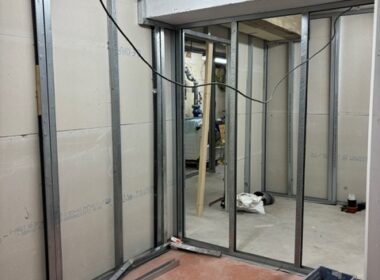Climate change is now a fact of life. But is architecture influenced by climate change, or simply by climate?
The answer seems just as obvious to us.
Since our very beginnings, architecture has been a response to the conditions of the environment in which man evolves. When you look at “traditional” architecture all over the world, you can’t help but notice the diversity of responses to the constraints of their environment.
Unfortunately, the industrial revolution changed all that. Electricity, mass production, the petroleum-powered internal combustion engine, the chemical industry, means of communication and the evolution of means of transport have profoundly transformed our economies and societies. And the resulting lifestyles are directly linked to climate change, the effects of which we are only just beginning to see.
Industrialisation and new technologies have enabled us to free ourselves from the constraints of our environment while increasing our comfort. Architecture found itself artificially freed from climatic constraints, with all the drifts we know today.
The Intergovernmental Panel on Climate Change (IPCC) was set up in 1988 to provide detailed assessments of the state of scientific, technical and socio-economic knowledge with regard to climate change, its causes, potential impacts and coping strategies. The IPCC has made the world aware of mankind’s impact upon the environment and its responsibility for climate change.
Today, it is time to recognise that we have acted immaturely in managing our resources, and that it’s time to get a grip. And even if we don’t want to, climate change leaves us with no other alternative.
With its back to the wall, the construction sector is no exception to this observation, and today’s architect must take this new reality into account. The architecture which will emerge from this new awareness will most certainly be a new architecture, combining both common-sense traditional architecture and today’s technologies, making the most of the resources available to us.
First of all, constructions can no longer be the same everywhere. They must reflect the local lifestyles and climatic conditions specific to each region. From now on, they will also have to take into account the major meteorological phenomena which will become increasingly frequent in the years to come.
We’re beginning to see all kinds of initiatives for returning to an eco-responsible architecture which is mindful of the environmental impact which it produces.
So-called Bioclimatic architecture is back on the agenda. The orientation of spaces, luminosity, natural ventilation, solar protection, phase shifting and the thermal inertia of materials are just some of the principles which today’s architects are once more adopting.
The techniques used in buildings aimed at mitigating the effects of climate change are also evolving rapidly. Many architects prefer low-tech techniques, which are more affordable, easier to use and repair, and accordingly longer-lasting.
High-tech technologies are only used as a last resort when all the other options have been exhausted.
With regard to materials, a major rethink is underway. Their carbon footprint must be as small as possible. This gives rise to a multitude of solutions.
Some will prefer local materials which reinforce the regional identity of the buildings while limiting the impact of transport. Others will use bio-sourced or geo-sourced materials in order to limit the use of petrochemical-based materials.
The same materials will be used in such a way that they can be easily dismantled and reused for other projects.
In any case, it’s essential to reflect upon the needs which we have. Only common sense will emerge.
We’ve all seen how we met the Passive challenge. We thought that it was too difficult to implement, too expensive, that construction companies wouldn’t be able to do it.
And yet, we’ve set a new standard that has made Belgium a forerunner in this field.
The same applies to low-carbon construction, which is the most appropriate response to climate change. Maybe the regulations will have to push us back a bit, but I’m convinced that in the next ten years we will be proud of the work which we have done.
Author: Rémy Rascol, Architect partner at CERAU
Read also: The ban of fluorescent lamps: bring lighting to the next level; Interior insulation: a free tool to help make the right choices; Should we throw the EPB out with the bathwater?; Glass: essential in any construction project





